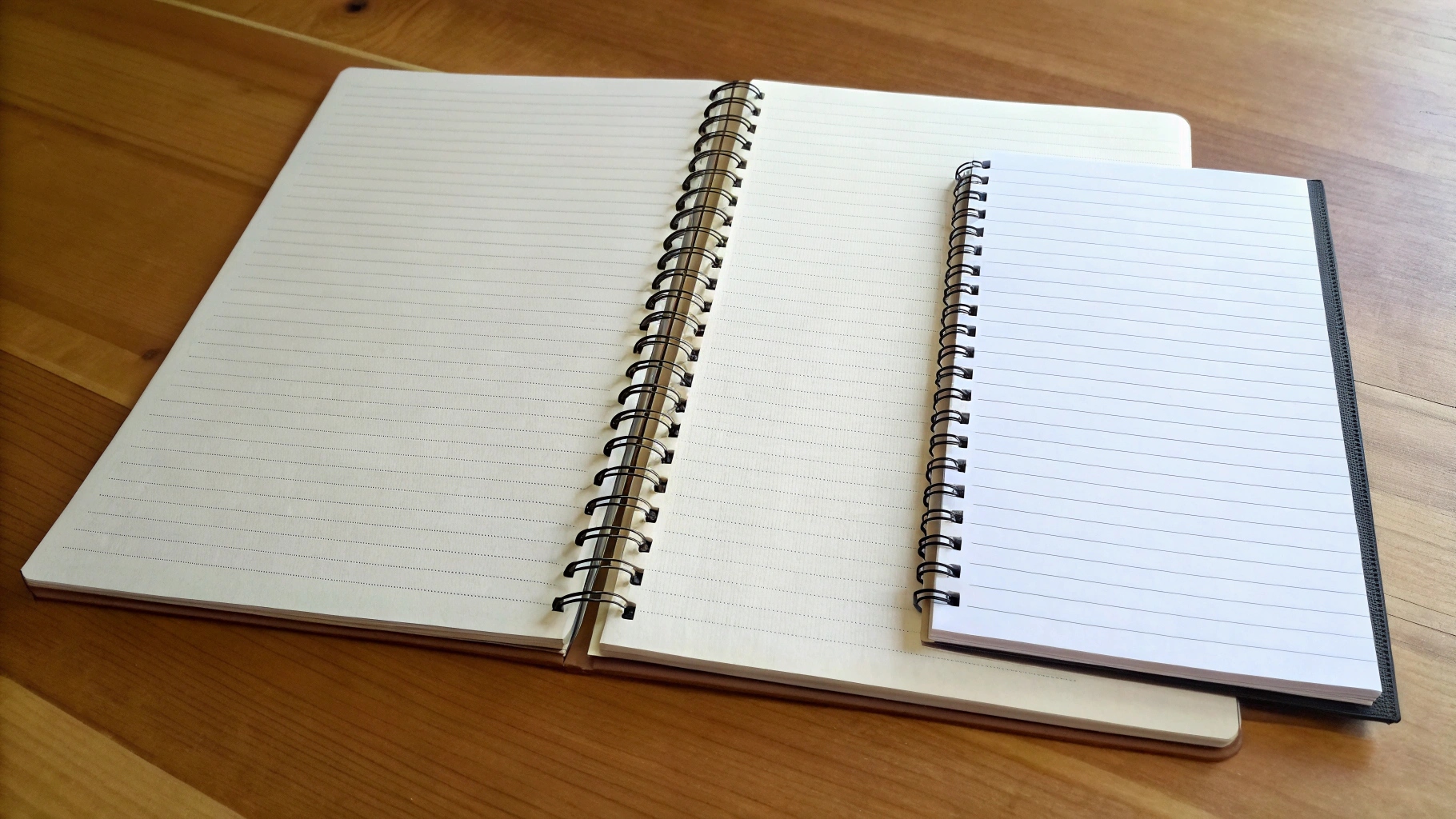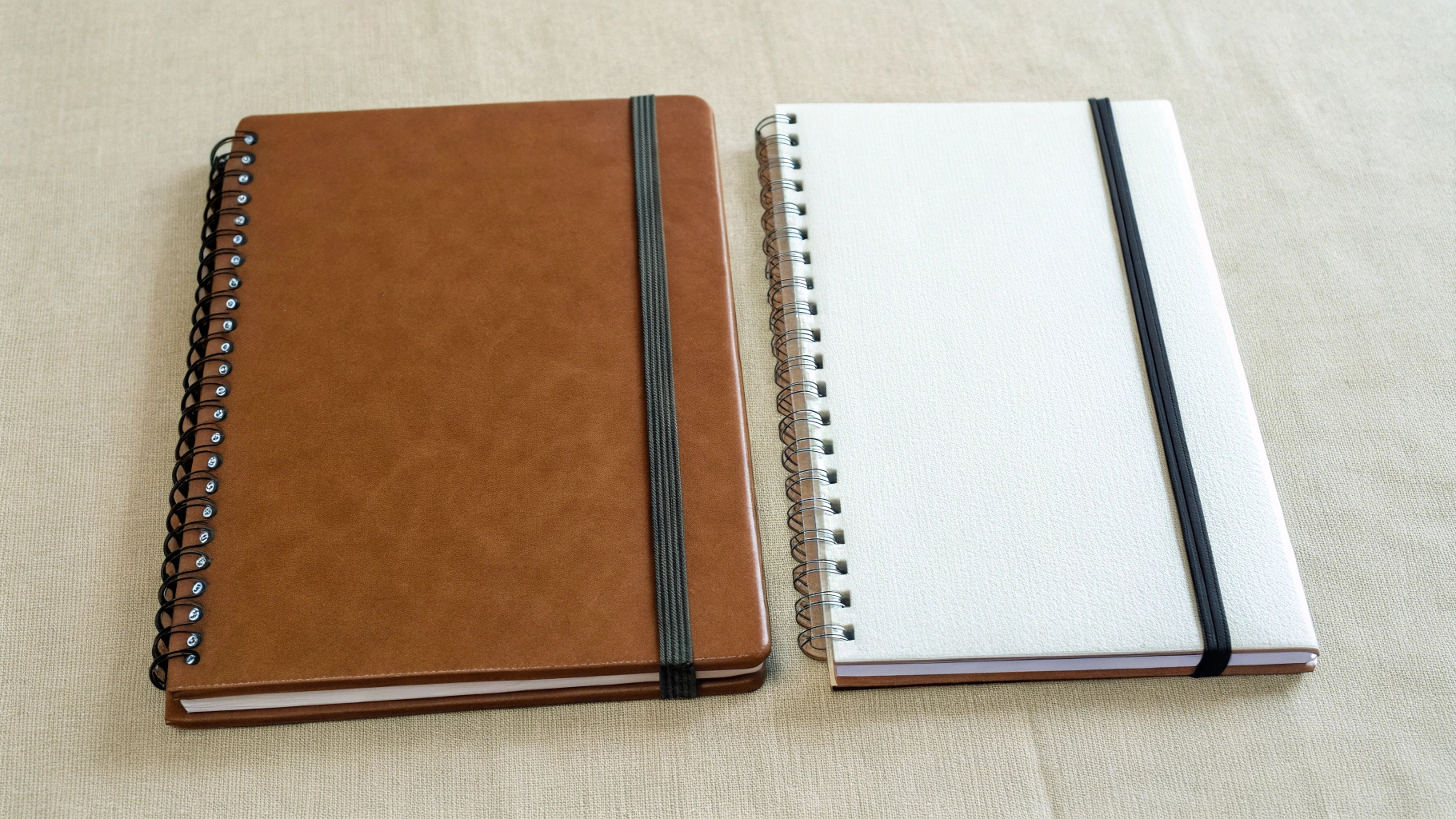How Do You Choose the Right Notebook Size for Your Brand?
Struggling to pick the right notebook size for your corporate gifts? Choosing wrong wastes budget and misses branding chances. Let's find the perfect, purposeful fit together.
Notebook sizes like A4, A5, A6, and B5 offer different writing space and portability. Choosing the right size isn't just about practicality; it depends on how the notebook will be used, directly impacting user experience and your brand perception.
Understanding these standard sizes is the first step towards making a strategic choice for your brand. I've learned over years in the printing and gifting industry that this detail matters. Let's break down the common options to see which works best for different situations and branding goals. We want gifts people actually use and appreciate.
What are the different sizes of notebooks?
Confused by terms like A4, A5, B5 when selecting notebooks? Picking blindly means your thoughtful corporate gifts might end up unused in a drawer. I'll explain the common sizes clearly for you.
Common notebook sizes usually follow the international ISO 216 standard1, mainly the A-series (like A4, A5, A6) and B-series (like B5). In the A-series, each size is half the area of the previous one (A4 is bigger than A5).
Most of the world uses the ISO 216 standard for paper sizes. This makes things consistent. The A-series is the most common. You start with A0, and each size down (A1, A2, A3, A4, A5, A6, etc.) is made by cutting the previous size in half parallel to its shorter sides. This means an A5 sheet is exactly half the size of an A4 sheet. The B-series sizes (like B5) are designed to fit between the A-series sizes, offering more options. A B5 notebook2, for example, is larger than A5 but smaller than A4. I remember a client planning a large conference; they chose A6 notebooks – small and easy for attendees to carry for quick notes. For their internal team strategy sessions, however, they opted for B5 notebooks, giving staff more room to write and brainstorm comfortably during longer meetings. Choosing the right size showed they understood the context of use.
Here's a simple comparison:
| Size | Dimensions (mm) | Dimensions (inches) | Common Uses | Portability | Writing Space |
|---|---|---|---|---|---|
| A4 | 210 x 297 mm | 8.3 x 11.7 in | Desk notes, meeting minutes, school work | Low | High |
| B5 | 176 x 250 mm | 6.9 x 9.8 in | Journaling, detailed notes, meetings, planning | Medium | Medium-High |
| A5 | 148 x 210 mm | 5.8 x 8.3 in | Daily journaling, portable notes, general use | High | Medium |
| A6 | 105 x 148 mm | 4.1 x 5.8 in | Pocket notes, quick memos, event giveaways | Very High | Low |
Which is bigger A4 or A5 notebook?
Need to know for sure if A4 or A5 is the larger size for your next project? Guessing wrong can lead to ordering impractical gifts that don't fit your audience's needs. I'll give you the simple answer.
An A4 notebook3 (measuring 210 x 297 mm or 8.3 x 11.7 inches) is significantly larger than an A5 notebook (148 x 210 mm or 5.8 x 8.3 inches). A4 offers double the writing area of an A5.

The difference between A4 and A5 comes directly from the ISO 216 standard I mentioned earlier. Remember, each A-size is half the size of the previous one. So, if you take an A4 sheet and fold it in half widthways, you get the exact size of an A5 sheet. This makes A4 the clear winner in terms of space. Think of A4 as the standard letter size paper most offices use. It’s ideal for situations where people need lots of room: taking detailed notes during long meetings, drafting reports, sketching complex diagrams, or for students taking lecture notes. However, its size makes it less portable. An A5 notebook, being half the size, is much easier to carry in a bag or even a larger coat pocket. It's perfect for journaling, daily to-do lists, or taking notes on the go. I once worked with a company providing notebooks for their sales team. We offered both: A4 for their desk-based planning and A5 for their client visits. This acknowledged their different work contexts and made the gifts genuinely useful, strengthening the brand connection.
A4 Use Cases:
- Office Environment: Ideal for desktops, extensive note-taking, printing documents.
- Academic Settings: Suitable for students taking detailed lecture notes or completing assignments.
- Planning & Design: Provides ample space for mind maps, project outlines, or sketches.
A5 Use Cases:
- Portability: Excellent for carrying in bags, backpacks, or briefcases.
- General Notes: Great for daily journaling, meeting summaries (if brevity is key), travel logs.
- Personal Organisation: Popular for bullet journaling and personal planners.
Choosing between A4 and A5 depends entirely on how you expect the recipient to use the notebook. Consider their role, environment, and typical tasks.
Which is bigger, an A5 or B5 notebook?
Wondering about the size difference between A5 and B5 notebooks for your branding needs? Choosing based only on what seems popular can sometimes backfire. Let's compare them directly so you can choose wisely.
A B5 notebook (176 x 250 mm or 6.9 x 9.8 inches) is noticeably bigger than an A5 notebook (148 x 210 mm or 5.8 x 8.3 inches). B5 offers a size between A4 and A5.

While the A-series uses a simple halving principle, the B-series sizes are calculated differently – they are the geometric mean between the corresponding A-series sizes. Simply put, B5 fits comfortably between A4 and A5. It offers a more generous writing area than A5 without being as large or cumbersome as A4. This makes B5 a really popular choice, especially for those who find A5 a bit too small for extensive writing but want something more portable than A4. I've found that many clients, like Jacky who needs practical yet well-designed items, gravitate towards B5. It strikes a great balance. It's large enough for comfortable note-taking during meetings, brainstorming sessions, or detailed journaling, yet it still fits reasonably well into most bags. It feels substantial without being bulky. Many users feel it's the 'sweet spot' for everyday carry and use, especially popular in markets like Japan and Korea, but gaining traction globally. If A5 feels potentially restrictive and A4 too large, B5 is often the perfect compromise.
Here’s how they stack up:
| Feature | A5 Notebook | B5 Notebook | Consideration |
|---|---|---|---|
| Size (mm) | 148 x 210 mm | 176 x 250 mm | B5 is wider and taller. |
| Size (in) | 5.8 x 8.3 in | 6.9 x 9.8 in | B5 offers roughly 35-40% more writing area. |
| Portability | Excellent | Very Good | A5 is easier for pockets, B5 fits well in bags. |
| Writing Area | Moderate | Generous | B5 allows for more detailed notes or larger writing. |
| Common Use | Quick notes, journaling, travel | Meetings, journaling, planning | B5 is versatile for desk and moderate portability. |
For Jacky, considering a B5 notebook could be a smart move. It aligns with the need for quality and design, offers practicality for various marketing or internal uses, and feels a bit more premium or considered than the very common A5, helping the brand stand out.
Conclusion
Choosing the right notebook size like A4, A5, or B5 is key for effective branding. Match the size to the user's needs to ensure your gift is valued and makes a lasting impression.
-
Understanding the ISO 216 standard can help you make informed decisions about notebook sizes for branding and usability. ↩
-
Discovering the benefits of B5 notebooks can help you choose the right size for your corporate gifts, ensuring they are appreciated and used. ↩
-
Exploring the uses of A4 notebooks can provide insights into their practicality for various settings, enhancing your branding strategy. ↩





